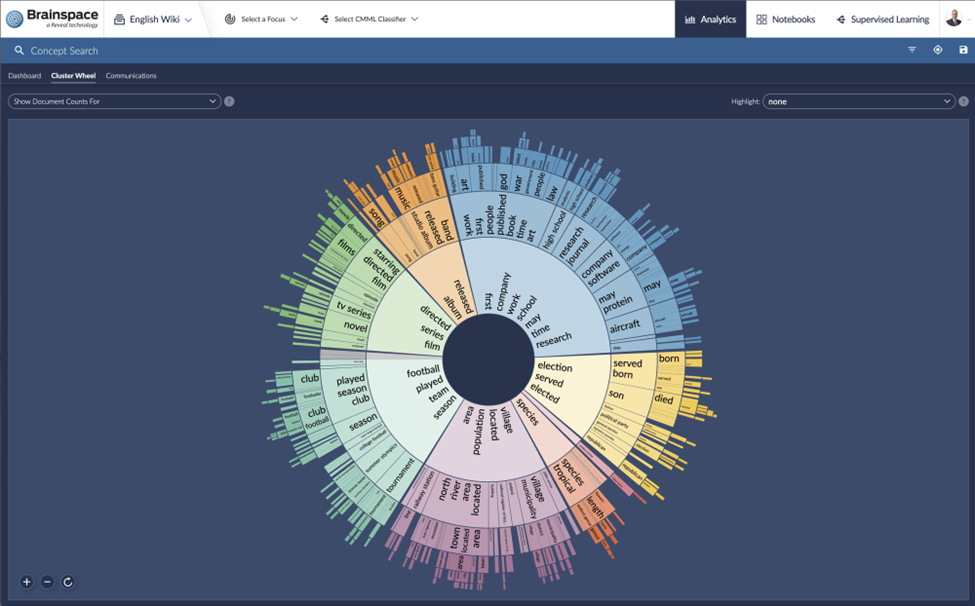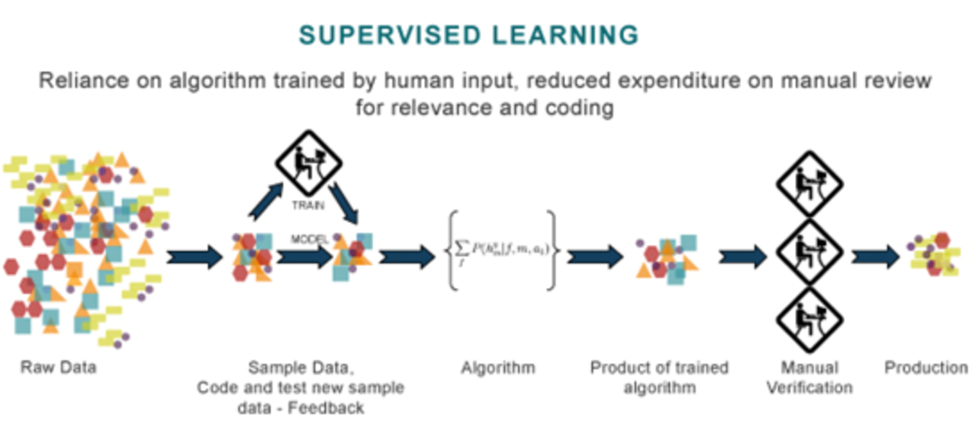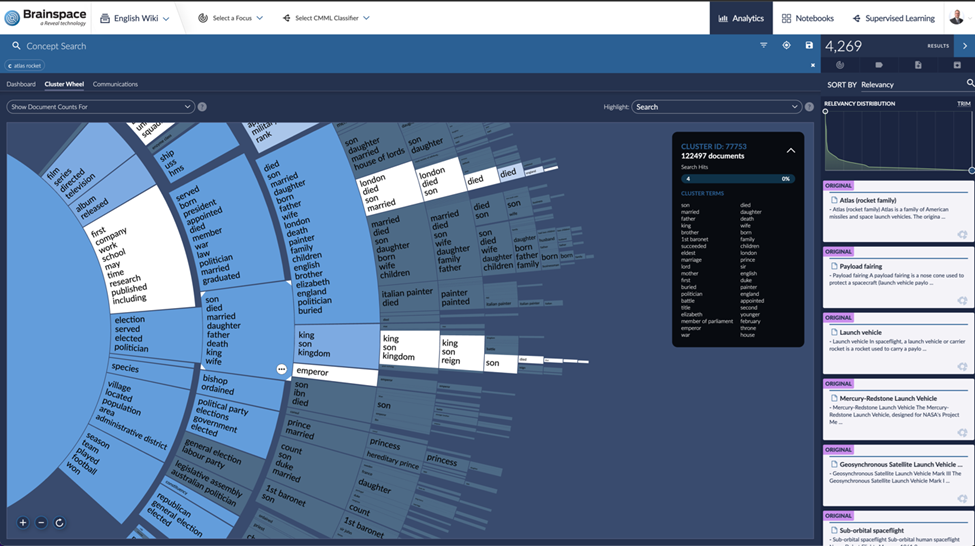What is Concept Clustering in eDiscovery?
In 2024 world has become smitten with all things Generative AI. But this is not eDiscovery’s first rodeo when it comes to leveraging powerful Artificial Intelligence and Machine learning. There are a whole host of powerful Machine learning and Artificial intelligence tools that Lawyers can leverage today.
Platforms like Reveal have a myriad of powerful, judicially approved, and defensible AI technologies baked right in. In the coming weeks I will breakdown all the powerful secret weapons at a legal professionals’ disposal today beyond the GAI belle of the ball.
First stop? Concept Clustering! Electronic Discovery (eDiscovery) projects today are often a vast sea of unstructured data, It can feel like you're drowning in a sea of legal documents. Well, fear not, you have a life boat called concept clustering as your secret weapon. Turning data set chaos into clarity.

What the Heck is Concept Clustering
It’s often said that a picture is worth a thousand words. But let's crank that up a notch when we dive into the world of electronic discovery (eDiscovery), shall we? Imagine that value multiplied by ten thousand. That's the power of Machine Learning (ML) enhanced data visualization for you. It's about connecting dots in ways that go far beyond the reach of raw human cognition—and doing it in a fraction of the time it would take without technological intervention.Top of FormBottom of Form
Concept clustering is a Visual Analytic tool powered by unsupervised machine learning that groups conceptually similar documents and files, Driving more efficient review.
If you think of a document review like one massive jigsaw puzzle, concept clustering is like sorting the pieces by color or shape. Concept Clustering works similarly. Grouping similar concepts to make solving the who, what, when where and why of a case a piece of cake!
This Visual Analytic powerhouse takes large amounts of disorganized legal data – emails, documents, SMS – and groups them into meaningful clusters based on similarity in content using a type. The tool uses a type of artificial intelligence known as unsupervised machine learning. By automatically grouping similar documents and flies, the algorithm streamlines the eDiscovery process.
Here's the kicker: it kicks off its magic without requiring a human to even start the process. Now, I know we've all seen the wonders of Technology-Assisted Review (TAR) and other AI-driven document review workflows. But let me tell you, the robust data visualization tools hitting the market are in a league of their own. They leverage unsupervised machine learning to map out patterns and spotlight anomalies without a human needing to eyeball a single document first.

The Tech Behind the Magic
Now, let’s bring out our inner dork break down the engine under the hood of Concept clustering! So, Concept clustering leverages advanced AI and unsupervised machine learning to analyze and understand patterns within text data within a dataset of Electronically stored information (ESI).
In unsupervised machine learning, the Algorithm connects the dots and finds conceptually similar documents or near duplicates independent of human input. The visual analytic depicts conceptually similar documents in an interactive sunburst graphic.
Concept clustering helps legal professionals weed out irrelevant information and make wide-ranging coding decisions to accelerate the document review. Conceptual clustering of ESI dramatically improves eDiscovery workflow efficiency and reduces time to insight.
Think of concept clustering as an Artificial intelligence matchmaker. But instead of helping you uncover true love; it’s discovering connections and patterns between legal concepts.
These algorithms go deeper than words and phrases. They comprehend context, themes, and nuances. Making them a secret weapon in finding relevant information in legal investigations and eDiscovery.

So What?
Today time is more precious than the fanciest espresso machine, and concept clustering speeds up the review process dramatically. Instead of combing through millions of pieces of ESI or documents manually. You can dive into neatly organized concept clusters, prioritizing relevant and related information.
Using concept clustering to quickly uncover key concepts and key documents is fast-forwarding through the boring bits of a movie to get to the good parts.
Insights in Overdrive
Accuracy and speed are both critical in complex modern eDiscovery matters. Concept clustering reduces the risk of human error by organizing similar content together. And at the same time, it speeds up time to insight by removing noise and spam material, prioritizing likely relevant material, and allowing review teams to review conceptually similar documents together.
Organizing data based on conceptual similarity makes it easier to exclude noise information like Spam or fantasy football in favor of highly relevant information. And this can far outpace even search terms on cases where little is known about the data or custodians or where a large data set is involved. Plus, it uncovers patterns and relationships you might not notice otherwise.

Be like Gumby
Whether you're tackling global joint defense litigation, a multibillion-dollar second request, or a small internal investigation, concept clustering is your flexible friend. The machine learning can apply to data sets from mini to massive.
Connecting the dots to help you get to important responsive information faster. The Data visualization adapts to the specifics of each data set. Providing customized insights about the ESI and various concepts within it.
Whatever the legal challenge, concept clustering has your back.
And, unlike the current Hype around Generative AI, concept clustering isn’t just theoretical tech wizardry It is widely deployed in cases today and over the last decade. Big law to Inhouse legal departments, legal teams are leveraging this tech to gain unprecedented insights and drive improved outcomes.
Your Secret Weapon
The world of legal tech rapidly changing. But there are tools and technologies legal professionals can rely on today that are battle tested and the bench approved. As AI and machine learning technologies advance, expect even more precise, efficient, and insightful clustering capabilities.
Whatever the subject matter, data set size, or type of document this unsung machine learning hero is your secret weapon. Legal professionals can transform data overload into a strategic advantage with just a click using the powerful visual analytics of concept clustering.
Learn more about Reveal’s Powerful Visual Analytics

